Series Title Sequence
New Teacher Survival Guide
Differentiating Instruction Program Transcript
ACT 1 : Meet Laura / Set up Differentiation
Open on an empty Herrick's High school, flag flying in the breeze.
CU of Laura driving to school
Lower Third:
Laura Gurick, 1st Year Chemistry Teacher
GURICK: I actually always wanted to be a teacher. I never remember wanting to be anything else. I always loved to help people. I liked to watch people understand something for the first time, that joy and that excitement.
Gurick exits her car, enters the school, starts preparing for the day
MEET LAURA GURICK, SHE’S A FIRST YEAR CHEMISTRY TEACHER AT HERRICKS HIGH SCHOOL ON LONG ISLAND IN NEW YORK.
Intv Laura Gurick GURICK: My typical day as a teacher as Herrick’s starts very early. I try to get here about 6:40 then what I usually do is I go right to the copy room. Make sure that I have everything that I need for that day. I start teaching at 7:30 and then, the rest of the day is a whirlwind.
Intv Jack Bierwirth
Lower Third:
Jack Bierwirth, Superintendent BIERWIRTH: Herricks High School is very high-performing, but pretty typical of Long Island. About 96, 97% of students leave here and go on to higher education. We have 69 different languages spoken in the homes of the 1400 kids in the high school, so it’s an incredibly diverse population.
Various shots of diversity at Herricks, dissolve into Laura’s classroom to show the same. THE DIVERSITY EXTENDS TO THE ACADEMIC READINESS OF THE STUDENTS IN LAURA’S CLASSROOM.
LIKE MANY NEW TEACHERS, LAURA STRUGGLES TO KEEP HER LESSONS ENGAGING AND USEFUL TO STUDENTS WITH A WIDE RANGE OF INTERESTS, LEARNING STYLES AND CURRICULUM KNOWLEDGE.
GURICK: I might have students that are struggling very much with the material, and then in the same class I have students that are hoping to go on to take AP Biology and AP Chemistry next year. It’s hard to do in one class. How do you challenge your top students while not leaving anybody behind?
TEACHERS MUST ADAPT THEIR LESSONS, SO THAT THEY CAN BE UNDERSTOOD BY STUDENTS WITH DIFFERENT APTITUDES AND ABILITIES.
A TEACHER WHO DIFFERENTIATES, RESPONDS TO THE DIVERSE LEARNING NEEDS OF HER STUDENTS.
THIS INCREASES THE LIKELYHOOD THAT ALL STUDENT WILL LEARN KEY CONCEPTS.
Intv Laura Gurick
GURICK: Okay, so today we’re continuing our gas laws discussion.
Sound up of Laura teaching in front of the class.
LAURA HAS BEGUN TO DIFFERENTIATE, BY DESIGNING LESSONS THAT ADDRESS THE MULTIPLE INTELLIGENCES IN HER CLASSROOM.
Sound up Laura:
Ok the pressure is constant, your volume went down, what had to have happened to your temperature? It went down!
See the PTV popsicle stick formula working. See students with calculator, see students writing equations in their notebooks. GURICK: Some students are really strong math students so they are going to really latch onto those equations and the math behind it.
Other students, they need to be able to see things and they need to be able to see examples in order for them to really learn and understand the concept.
Those are all different ways that hopefully we will help all different types of learners whether they be auditory, sensory, or they like to write things down and just do the math behind it.
See shots classroom STILL, LAURA STRUGGLES TO KEEP ALL HER STUDENTS ENGAGED AND WORKING TO THEIR MAXIMUM POTENTIAL.
Intv Laura Gurick GURICK: It’s easier for me to hit on a different type of learner in my lesson, but it’s harder for me to work with students at very different ability levels in one particular class.
ACT 2 : Meet the expert – skype interaction
Beat 1: Meet Rick Wormeli / Skype talk
SEE Rick Wormeli in front of a group of teachers at the Key School in Annapolis, Maryland Wormeli: I can count on one hand the number of times I’ve given the same homework assignment in my class over the course of the year.
POV from behind the stage. CU of teachers taking notes RICK WORMELI IS A SCIENCE TEACHER FROM VIRGINIA, AND AN EXPERT ON DIFFERENTIATED INSTRUCTION
Wormeli: Some kids need batting, some catching, some need to lift some weights, some running, what ever it is. Not everyone needs batting practice. You change the practice, according to what children need.
Intv Rick Wormeli WORMELI: Differentiated instruction is kind of the pragmatist’s credo, whatever works. You’ve got this one lesson you’re going to do. You’re sensitive to, is it working or not. And if the kids aren’t learning to the level, then what do I need to do to adjust it? It’s such a diverse repertoire of responses, that I can respond to the needs of my students. So a lot of people call differentiated instruction, responsive teaching.
SEE Laura preparing for the Skype conversation at her apartment. Rick prepares for the conversation on his side. LAURA CONSULTS WITH RICK VIA SKYPE TO GET SOME PRACTICAL TIPS ON DIFFERENTIATING INSTRUCTION.
WORMELI: Hey Laura how are you?
GURICK: Good, how are you?
WORMELI: Great. I’m ready to talk some differentiated instruction. What do you have for me today?
SEE Laura at the computer, Rick listening.
GURICK: So, I have a very diverse group of students, some at the very very high end of the class, who are accelerated and learn the material even before it is introduced in class. I’m having a little trouble with really hitting everybody and making sure that everybody has that appropriate challenge.
WORMELI: How do you know these students are accelerated?
GURICK: They are preparing for the SAT2 already, so they are taking a review class. They’ve already been taught in a review way what the topic is. They’ve gone through the book, they’ve gone through practice questions, they’ve had home works on it, and I haven’t taught a thing yet.
Beat 2: Advice
Graphic
Tip: Begin with Assessment BEFORE A TEACHER CAN DIFFERENTIATE SUCCESSFULLY, SHE MUST ACCURATELY ASSESS THE LEVEL OF HER STUDENTS’ COMPETENCE.
Intv Rick Wormeli WORMELI: Assessment has to be accurate in a differentiated class. If I make a decision based on false assessment data, the whole enterprise of teaching, let alone grading and whatever happens with the child’s future will also be based on this faulty premise.
Graphic
Tip: Assessment should be continuous to track student progress.
Graphic
Tip: Use exit slips or classroom discussion to assess student progress.
ASSESSMENT SHOULD BE CONTINUOUS TO TRACK STUDENT PROGRESS.
TEACHERS CAN PASS OUT AN INFORMAL QUESTIONAIRE BEFORE TEACHING A NEW CONCEPT TO GAUGE STUDENT KNOWLEDGE.
USE ONGOING ASSESSMENTS LIKE EXIT SLIPS OR CLASSROOM DISCUSSION TO SEE WHO IS STRUGGLING AND PROVIDE ADDITIONAL SUPPORT AS NEEDED.
Intv Rick Wormeli
WORMELI: Every problem I write on my tests and quizzes I’m gonna say, ‘And which standard, or benchmark, or learning target is that?’ And the learning targets, where’s the evidence of that? Is that ample evidence? A grade is far more accurate when it’s clear, consistent over time, not one snapshot moment in time.
See Skype conversation, Rick is on-screen.
WORMELI: Okay. So, how do you deal with a variety of readiness levels in the same 43 minutes or 86 minutes?
Gurick: Correct.
WORMELI: All right, well how familiar are you with tiering? Have you studied that in your undergraduate or in service training?
Gurick: Not formally yet, no.
Graphic: Tip:
Tier lessons to challenge all students A TEACHERS WHO TIERS A LESSON TEACHES THE SAME CONCEPT TO EVERYONE, BUT VARIES
THE LEVEL OF COMPLEXITY TO ENGAGE ALL STUDENTS.
WORMELI: lets choose one right now, that you have to teach. Let’s figure out, ok, what’s for the basic class and what can we do for the advanced students.
GURICK: We just finished up gas laws.
WORMELI: Ok, so name one that you’d want to get across.
GURICK: The ideal gas law.
WORMELI: Explain that for all those listening
GURICK: It’s the equation used for ideal gases that allows us to figure out the pressure, temperature, volume relationships, while also changing the number of moles of a gas.
WORMELI: What’s the basic thing you’d want students to be able to do at the end of that lesson?
GURICK: Really just be able to look at and read a word problem, and be able to extract the information from the word problem, to put it into the formula and solve for an unknown.
WORMELI: Can you have word problems where there’s lots of extraneous information that might confuse the students.
(SKYPE) GURICK: They love that.
Graphic: Tip
Use word problems of varying complexity. WORMELI: I could have for those advanced kids some complex word problems where it’s not so obvious how you manipulate everything, and some where it’s very direct, very forward and slowly segway from one to the other for that lower introductory group.
TIERING A LESSON ALLOWS ALL STUDENTS TO EXPERIENCE SUCCESS.
Intv Rick Wormely WORMELI (INTV): Students of all ages crave competence and if they don’t get it they feel humiliated, they feel hurt, they feel angry. If I do something developmentally appropriate and they shine, they’re very motivated.
SEE Skype conversation WORMELI: So, now, next steps right away based on what we talked about here, what’s going to happen for you and your lesson design in the next two or three days? What are some things you will change or try?
GURICK: I think I definitely want to try diverging or splitting up the class in an organized way.
Graphic: Tip
Present concepts to the whole class, then tailor groups to differentiate
WORMELI: You could do a global lesson for 10 – 15 minutes, and then really let people expand their own ways.
These advanced students go off on another level that you’ve prepared for them that’s much more challenging, and these other kids are much more rudimentary, then the two or three groups come together and summarize what they’re able to pull out as salient from that.
Intv Rick Wormeli Wormeli: I need to mix and match. I will put higher performing with lower performing sometimes. Sometimes I’ll put all higher performing, sometimes I’ll put all lower performing. It’s going to be very, very dynamic and you won’t always be in the same group.
Graphic: Tip
Group students by readiness level, interest or learning style READINESS LEVEL ISN’T THE ONLY WAY TO GROUP STUDENTS IN A DIFFERENTIATED CLASSROOM.
STUDENTS CAN ALSO BE GROUPED BASED ON INTERESTS OR LEARNING STYLES.
Intv Rick Wormeli. We talk about flexible groups in the class as having these semi-permeable membranes. They’re very dynamic, they’re not static in their membership. And students can change that as long as they present evidence you’re ready to move onto this other station.
SKYPE conversation WORMELI: Is there anything else?
GURICK: I really want to go more into the research as well and try to get my hands on some Differentiating Instruction books to see what’s out there.
WORMELI: There are books out there on differentiation, but you want to find the ones with chapters on scaffolding and tiering.
WORMELI: You can’t just read one book and suddenly you know how to differentiate instruction. So I recommend usually 3 or 4 books in the very first year and you pull the stuff that works.
ACT 3: Laura tries some of the new techniques
SEE students in hallway, dissolve to Laura’s classroom
We see Laura back in the BACK AT HERRICKS, LAURA HAS ADDED TIERING TO HER TEACHING TOOL KIT.
Graphic (with a checkmark).
Tier lessons to challenge all students
Actuality of students in class writing.
Intv Laura Gurick. GURICK: Using a different difficulty word problem has been helpful because the students then are able to work at their own level and be challenged at a level that’s suitable for them.
Actuality of Gurick having students do an exit slip about gas laws. GURICK: Ok, so you’re going to give me a written description of what happened, why you think it happened, and which gas law is this?
Graphic (with checkmark): Assess continuously to track student progress SHE IS USING EXIT SLIPS TO ASSESS STUDENT MASTERY OF NEW CONCEPTS.
Bell rings, student leave class
Graphic (without checkmark): Group students by readiness, interest, or learning style.
BUT WORKING WITH GROUPS REMAINS A CHALLENGE.
GURICK: It takes time. People don’t realize that grouping students takes a lot of time and a lot of preparation time. It’s a challenge to try to incorporate everything into every lesson.
Intv Rick Wormeli Wormeli: It just seems overwhelming. It seems like sometimes, ok, I’m just going to do individualized plans for everybody. And nobody is asking anybody to do that. You don’t have to differentiate 24/7. It’s often just fine to have everyone do the exact same thing.
Whole class instruction is a part of a differentiated class, but you’re going to have to realize there’ll be some flexible grouping, some independent stuff from time to time, and you wax and you wane through all that. That’s alright. I mean seriously, one differentiating idea per month for three years, that’s a teacher on pace for learning this.
Intv Laura Gurick GURICK : I know that one day I will be an expert in differentiated instruction. It will not be today, it will not be tomorrow, it just takes a lot of time.
Graphic: End Credits


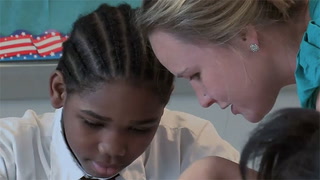
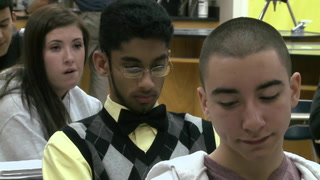

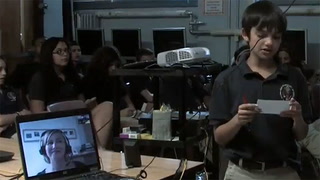
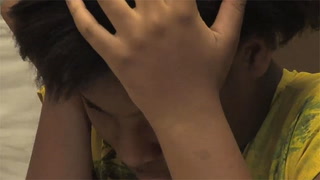
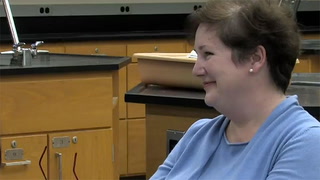
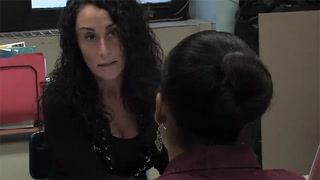








99 Comments
Shelia Tucker Mar 19, 2023 11:41pm
THOUGHT STARTERS
Lewis Scott Oct 31, 2022 12:20am
1. Assessment lets you know where the class is at a whole, where the highest level and lowest level students are at in umderstanding of the concepts.
2.Pre assessments and post assessments or exit tickets in individual classes. Seeing what was learned about a specific concept.
3.You can use tiering with your language and the amount of information describing concepts by providing more simple concepts and explanations or more in depth.
4.In my Badminton class I can have some people practicing the drop and hit, others the throw and hit, and others hitting it to a given target.
5.Some students can be playing a modified game of badminton, others can be playing actual game tournament.
Nallely Barrera Aug 1, 2022 2:06pm
kailey cline Jul 14, 2022 2:09pm
1. Assessments are importants to assess students with diffrentiation becuase it helps the teacher understand how the students respond best wether they are visual, auditory or hands on learners.
2. exit tickets, projects of students choice over a topic, set goals, these are all ways to diffrentiate instruction for assessments.
3. keep assessments consistant and see where students are struggling. This can help the teacher change her lessons in areas that students are struggling and she can add in activities into the lesson that intrests each students needs at their individual level.
4. providing multiple means of instuction and learning. Having stations that use technology, a word problem station, a reading station, a hands on experiment station.
5. If i were to have a tiered lesson I would make simple changes and have students rotate and switch groups that they work with.
Sarwat Saqib Jun 6, 2022 12:50am
Assessment plays a crucial role in a differentiated classroom. It helps learners to recognize their own learning capabilities and to think of ways to improve them. It can be formative assessment throughout the lesson with the help of different resources to know learners' needs and interest. I think there should be challenge level and complexity to meet students at their level. I can simply start differntiating by task in my lesson or by grouping my learners. But obvoiusly grouping needs enough time however learners' profile is helpful.